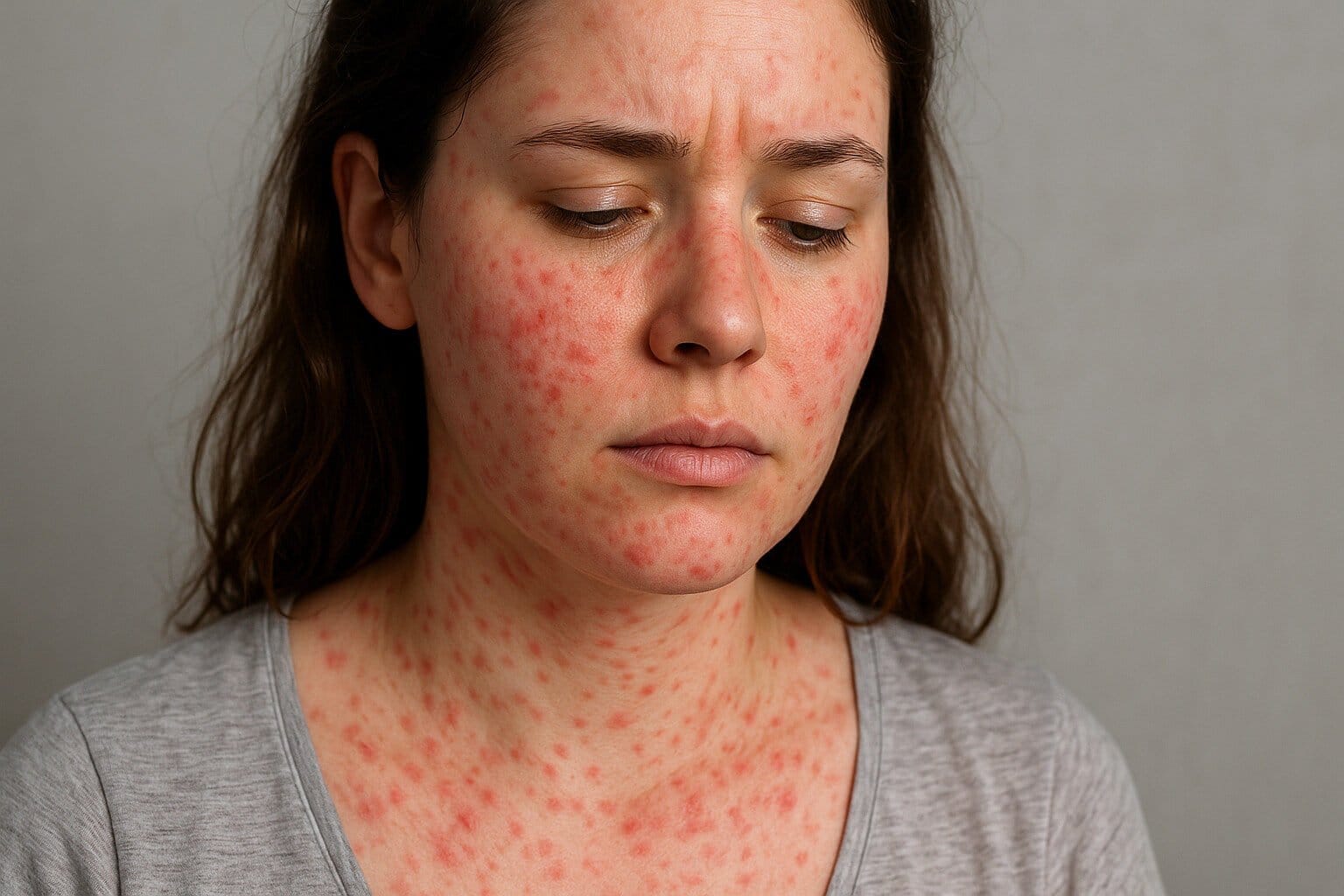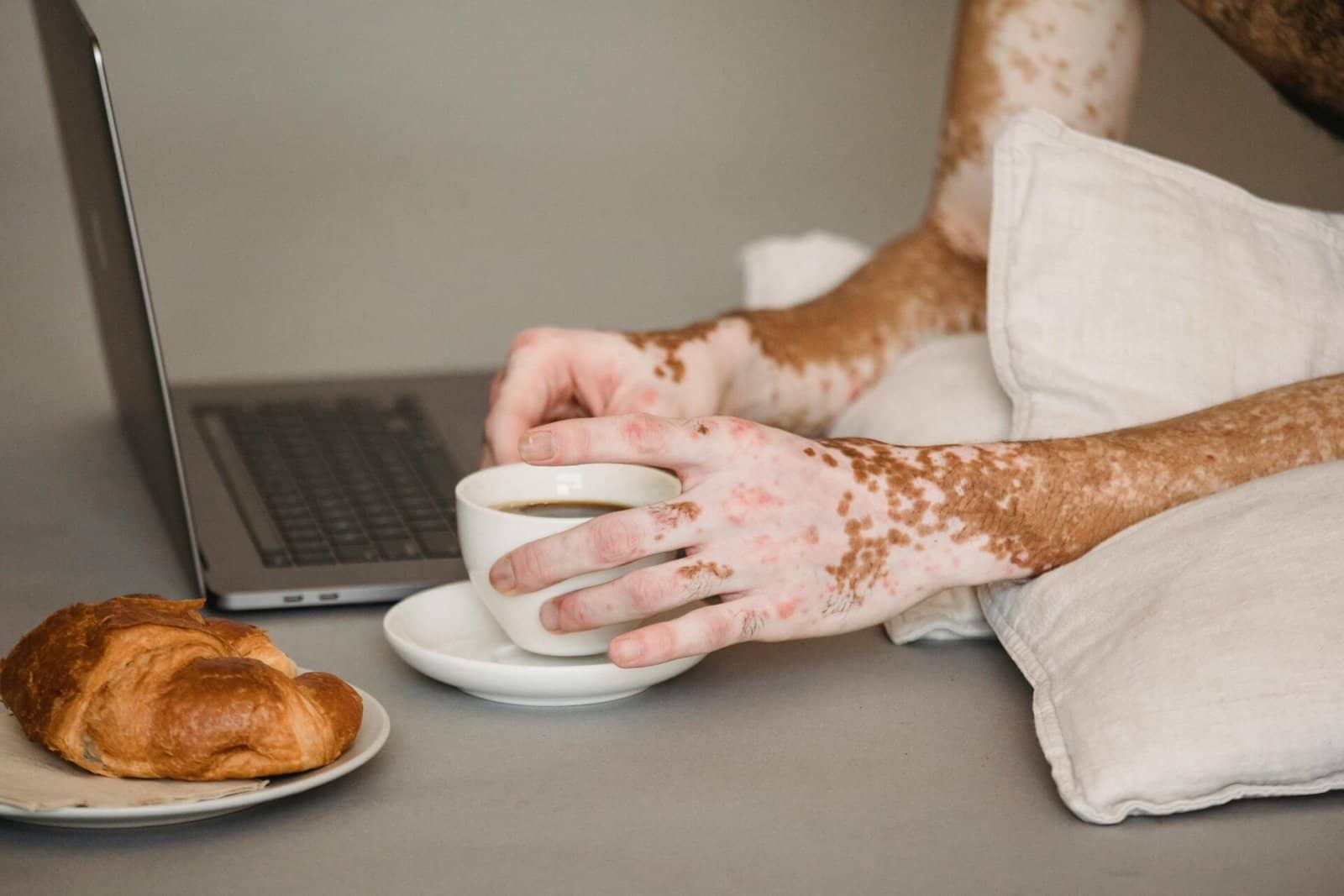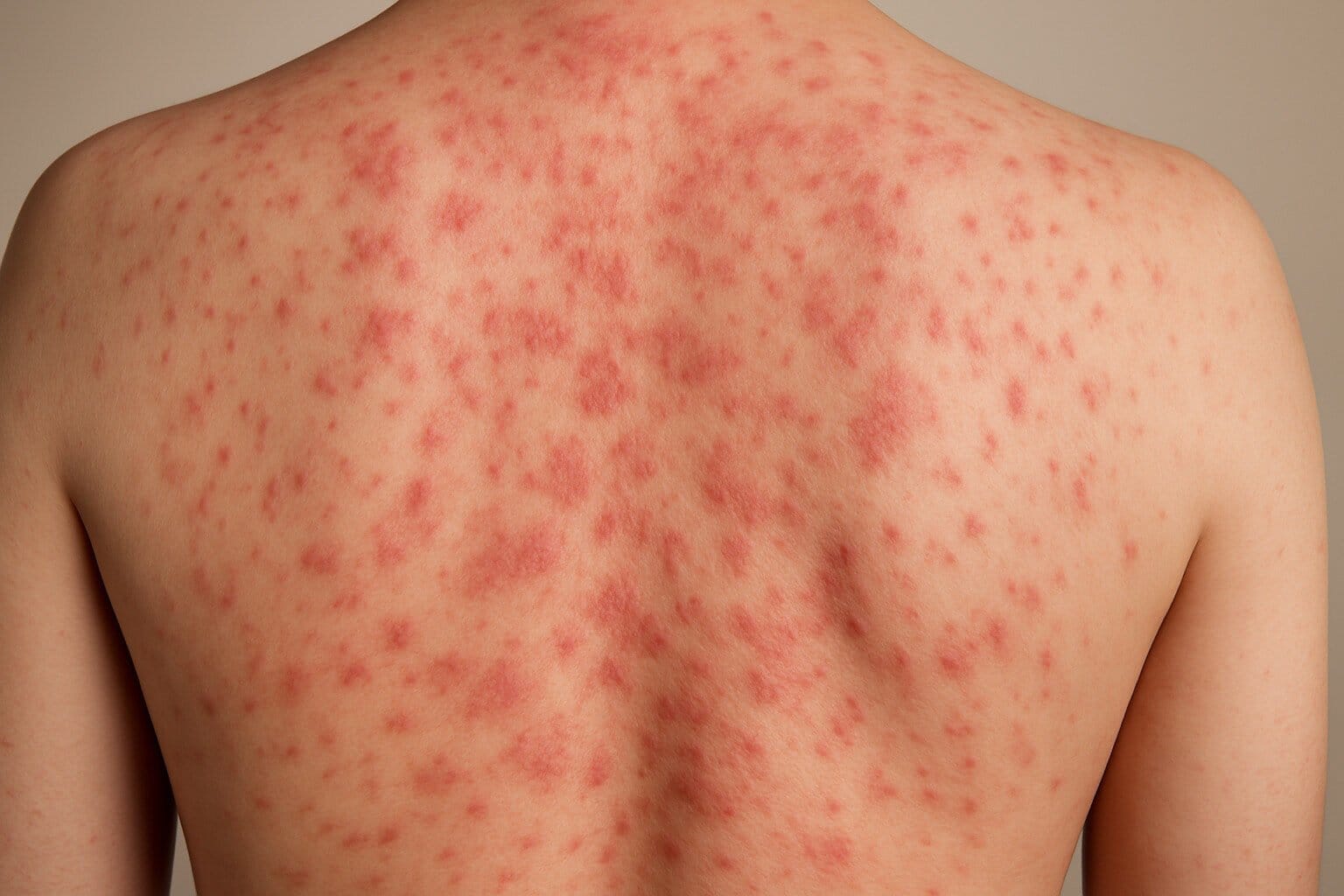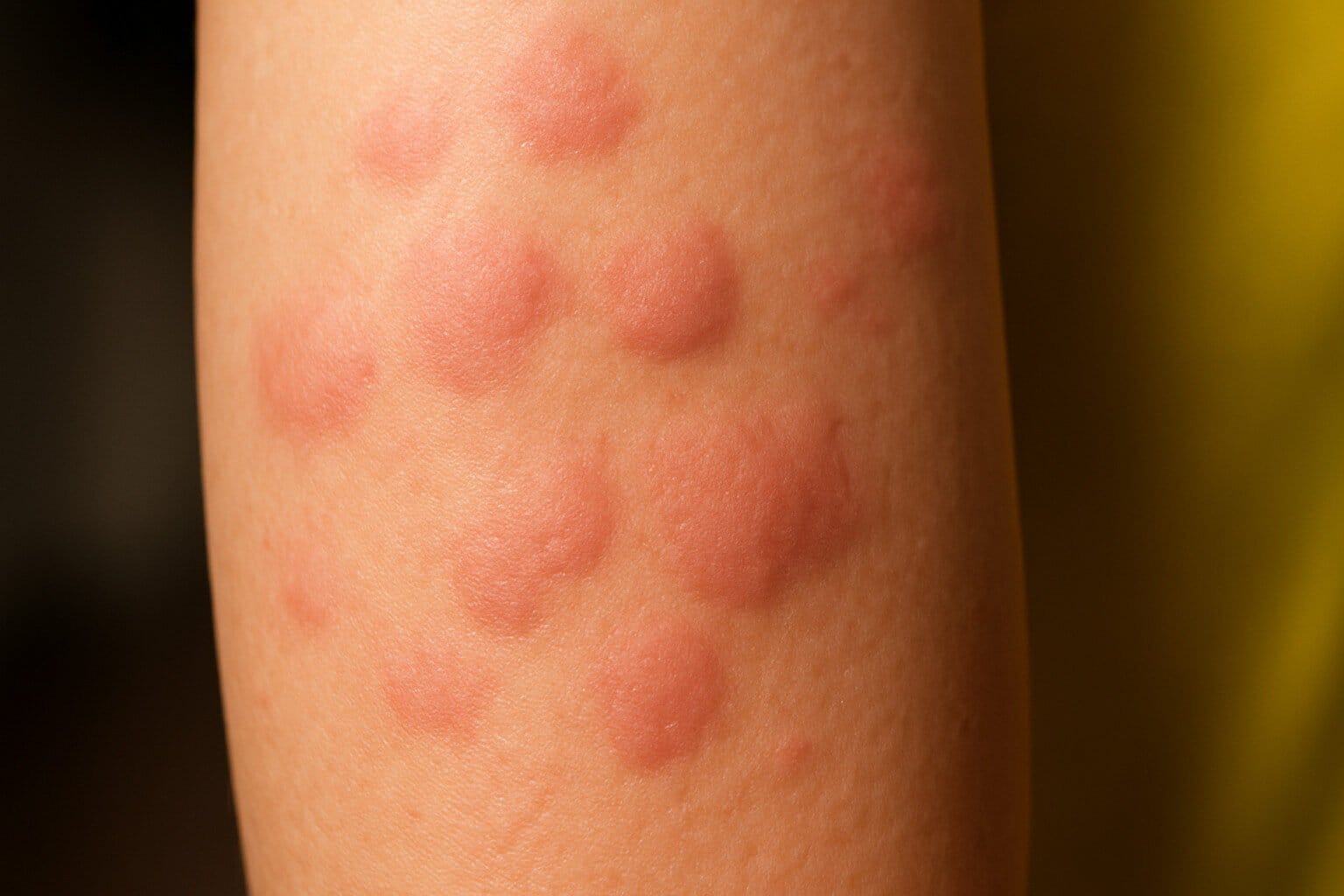Skin Rashes Uncovered: What Causes Them?

- What are Skin Rashes?
- Why do they Appear?
- How do they form?
- Types
- Myths
- Solutions
- Preventions
- Recommendation
- FAQs
Skin rashes are red, itchy patches that pop up on your skin, making you feel super uncomfortable. For example, they can appear before a big event, like a school talent show, a soccer game, or a family barbecue. These rashes look blotchy, feel scratchy, and can make you shy about your arms or face. Moreover, they can spread or get worse if you don’t know what’s causing them. Rashes aren’t usually dangerous, but they’re annoying, especially when you want to look great for a special day. However, you can manage them with easy tricks. This article explains what skin rashes are and why they happen. Additionally, it covers how they form, different types, myths to skip, and simple ways to treat and stop them. Furthermore, we include tips and answer questions to help you get clear, comfy skin. Therefore, this guide will help you feel confident and keep rashes away for good.
What Are Skin Rashes?
Skin rashes are red, irritated spots on your skin that often itch, burn, or feel sore. Unlike pimples, they can cover big areas and feel really bothersome. For instance, they show up on your arms, legs, or face, like after playing in the grass or wearing a new bracelet. They might look like red bumps, scaly patches, or raised welts. Moreover, anyone can get rashes, not just kids your age. Things like allergies, hot weather, or touching weird stuff, like a new lotion, cause them. For example, they often appear where your skin is sensitive, like your elbows, knees, or neck. However, they can pop up anywhere, even your back. By learning what causes rashes, you can fight them better. Therefore, this guide gives you tools to handle rashes and make your skin feel smooth and happy again.
Why Do They Appear?
Skin rashes happen when your skin gets irritated or inflamed by something touching it or inside your body. Your skin protects you, but it can react to lots of things. For example, touching plants like poison ivy, wearing clothes with itchy dyes, or eating foods like peanuts or strawberries can trigger rashes. Additionally, hot weather, stress from a big test, or bug bites, like from mosquitoes, can cause them. Bacteria or fungi, like from sweaty gym socks or damp towels, can also make rashes. Moreover, some medicines, like ones for colds or allergies, might cause skin reactions in some kids, making their skin red or bumpy.
Furthermore, hormones or stress, like worrying about a school play, can make your skin more sensitive. If your parents have allergies, you might get rashes too, because it runs in families. For instance, not washing off sweat after a bike ride or using harsh soaps can irritate your skin. Dry skin from cold weather or not drinking enough water can also lead to rashes. Therefore, knowing these causes helps you figure out what’s making your skin itchy and how to stop rashes before they spread or get worse.
How Do They Form?
Skin rashes form when your skin reacts to something that bothers it, like an allergy or germ. Your skin has layers that keep out dirt and germs. Sometimes, things like pollen, soap, or bug bites break through this barrier. For example, touching a plant or wearing a scratchy new shirt can make your skin red and itchy. This irritation causes redness, swelling, or itchiness, forming a rash. Some rashes come from allergies, others from germs, heat, or even stress. Unlike pimples, which are small, rashes can spread over bigger areas, like your arms or legs.
Additionally, scratching a rash makes it worse, letting germs in and causing more irritation. For instance, scratching a mosquito bite can make it swell more. Sweat, like after gym class, or dirty clothes can trap irritants against your skin. Moreover, dry skin or harsh lotions can weaken your skin’s protection. This process, irritation, swelling, and sometimes germs, creates rashes. Therefore, knowing how they form helps you keep your skin calm and avoid that itchy, red feeling.
Types
Skin rashes come in different types, and some look a bit like acne. Here are the main kinds you should know:
- Contact Dermatitis: Red, itchy patches from touching stuff like poison ivy, new soap, or jewelry. For example, they show up on your hands after gardening.
- Eczema: Dry, scaly, itchy patches, often on elbows, knees, or cheeks. For instance, it gets worse in cold weather or when you’re stressed.
- Heat Rash: Small, red bumps from sweating a lot, like during a hot soccer practice. They appear on your neck or chest.
- Hives: Raised, itchy welts from allergies, like to foods, medicines, or bug bites. Moreover, they can pop up anywhere, like your back.
Each type needs different care to heal properly. Contact dermatitis and heat rash often get better at home. However, eczema or hives might need a doctor’s help if they don’t go away. Therefore, knowing your rash type helps you pick the right way to treat it and keep your skin healthy.
Myths
There are lots of wrong ideas about skin rashes that can mix you up. Therefore, let’s clear up some common myths to set things straight:
- Myth 1: Rashes always come from dirty skin. Nope! Allergies, heat, or germs cause them. However, not washing can make rashes worse by adding dirt or sweat.
- Myth 2: Scratching rashes makes them heal faster. Wrong! Scratching spreads irritation or germs, making rashes bigger or more painful.
- Myth 3: Only kids get rashes. Not true! Kids get them a lot, but adults can too. For example, stress or allergies cause rashes in grown-ups.
- Myth 4: Toothpaste fixes rashes. No way! Toothpaste irritates your skin and makes rashes worse. Instead, use creams made for skin.
- Myth 5: Food doesn’t cause rashes. Actually, allergies to foods, like nuts or shellfish, can cause hives or rashes in some kids.
Thus, fixing these myths helps you focus on real ways to stop rashes instead of trying stuff that doesn’t work or makes your skin itchier.
Solutions
You can treat many skin rashes at home with gentle tricks to calm your skin and stop the itching. Try these ideas to get started:
- Gentle Washing: Wash the rash area twice a day, morning and night, with a mild, fragrance-free soap labeled “non-comedogenic.” For example, it won’t irritate your skin. This cleans dirt and sweat without making the rash worse, like after playing outside.
- Soothing Creams: Use a cream with 1% hydrocortisone for itchiness. Dab a tiny bit on the rash once a day, but ask a parent first. This reduces redness and itching. However, don’t use it too long, it can thin your skin.
- Natural Fixes: Try these home remedies to help your skin feel better:
- Aloe Vera Gel: Put fresh aloe vera gel on the rash before bed. It cools and soothes itchy skin, like a calming bandage while you sleep.
- Oatmeal Bath: Soak in a lukewarm bath with colloidal oatmeal for 15 minutes. It calms red, itchy patches, especially after a hot day.
- Cold Compress: Press a cool, damp cloth on the rash for 10 minutes, two times a day. It reduces swelling and feels good on sore skin.
Do these carefully, and you might see rashes improve in a few days. For instance, mild rashes often get better fast with these tricks. However, if a rash spreads, gets painful, or lasts more than a week, ask a parent to help you see a doctor for stronger treatments, like special creams or medicines.
Preventions
Stopping skin rashes means keeping your skin happy and avoiding things that irritate it. Here are some practical tips to try every day:
- Gentle Moisturizer: Use a fragrance-free, non-comedogenic moisturizer every day, even if your skin feels fine. This keeps your skin from getting too dry, which can lead to itchy rashes, especially in winter.
- Avoid Triggers: Skip harsh soaps, new clothes without washing them, or lotions with strong smells. For example, rinse new shirts or jeans to remove dyes that might bother your skin. Shower right after sweating, like after gym class, biking, or playing tag, to wash off sweat and dirt.
- Sun Protection: Put on a non-oily SPF 30 sunscreen every day, even if it’s cloudy. Sun can irritate your skin and make rashes worse. Choose a sunscreen with zinc oxide if your skin is sensitive to avoid extra redness or itching.
- Eat and Drink Healthy: Drink lots of water to keep your skin hydrated and strong. Eat fruits, veggies, and whole grains, like apples, carrots, or oatmeal. Avoid foods you’re allergic to, like nuts, eggs, or shellfish, which can cause rashes like hives in some kids.
- Handle Stress: Stress can make your skin more sensitive, leading to rashes. Try relaxing stuff, like deep breathing, drawing, or listening to music after school. Sleep 8 hours every night to help your skin stay healthy and fight off irritation.
Keep doing these tips daily to prevent rashes from starting or coming back. If you get rashes often, or if they’re really bad, like covering a lot of your skin or feeling super sore, ask a parent to help you talk to a doctor for extra help and advice.
Recommendation
To fight skin rashes at home, start with an easy, daily plan that’s simple to follow for kids like you. First, wash the rash area every morning and night with a mild, fragrance-free soap that says “non-comedogenic” on the bottle. This cleans away dirt, sweat, and germs without making your skin mad. Then, dab a tiny bit of 1% hydrocortisone cream on itchy spots once a day to reduce redness and itching, but always ask a parent before using it. Additionally, try natural fixes, like aloe vera gel or an oatmeal bath, 2-3 times a week to soothe your skin and make rashes less red and scratchy. After washing, use a fragrance-free, non-comedogenic moisturizer to keep your skin soft and protected. Also, put on SPF 30 sunscreen every day to shield your skin from the sun, which can make rashes worse.
Next, write down what might cause your rashes in a notebook or phone app, like touching new plants, eating certain foods, or wearing a new watch. Avoid those triggers whenever you can. For example, wash new clothes before wearing them, and shower right after sports or playing outside to rinse off sweat. Don’t scratch rashes, even if they itch a lot, because it can make them worse or let germs in. Moreover, eat healthy foods, like fruits, veggies, and whole grains, and drink lots of water every day to keep your skin strong. Try to avoid foods you’re allergic to, like peanuts or dairy, which might cause rashes. Furthermore, relax with fun activities, like listening to music, stretching, or even coloring, because stress can make your skin more sensitive. Get 8 hours of sleep every night to help your skin heal and stay healthy. Be patient, most rashes take a few days to a week to get better with these steps. However, if a rash doesn’t improve after a week, spreads to more areas, or gets really painful or swollen, ask a parent to help you see a doctor for stronger treatments, like special creams or allergy medicines.
FAQs
Q: Do skin rashes go away on their own?
A: Some rashes fade in a few days. However, treating them helps them heal faster. See a doctor if they last longer.
Q: Does scratching rashes make them better?
A: No, scratching makes rashes worse and spreads germs. Instead, use soothing creams or a cold compress to stop itching.
Q: Can food cause skin rashes?
A: Yes, allergies to foods, like nuts or shellfish, can cause rashes. Therefore, avoid foods that trigger your skin.
Q: Are all skin rashes the same?
A: No, contact dermatitis comes from irritants, eczema is chronic, and hives are from allergies. Each needs different care.
Q: How long does it take to clear rashes at home?
A: Most rashes improve in 3-7 days with home care. However, some need a doctor’s help if they don’t go away.
Q: Can sunscreen cause skin rashes?
A: Harsh sunscreens with strong chemicals might. Therefore, use fragrance-free SPF 30 labeled “non-comedogenic” to avoid irritation.
Q: Can regular soap help rashes?
A: No, regular soap can irritate skin and make rashes worse. Instead, use mild, fragrance-free soap for gentle cleaning.
Q: Can kids get skin rashes?
A: Yes, kids and adults can get rashes from allergies, heat, or germs. Treat them early to stop spreading.
By learning why skin rashes happen and using these simple fixes and tips, you can keep your skin calm and comfy. Stick with your routine, avoid things that cause rashes, and be patient, your skin will look and feel great!
Subscribe to our newsletter!






